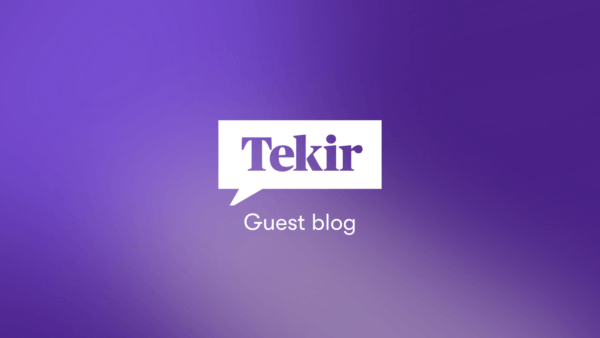
4 ways to enhance organizational learning by understanding emotion
Successful organizational learning is social and collaborative. Only when each participant can make the learning relevant and applicable to their own work can it stick. Unlike top-down learning, collaborative learning programs are co-created by the entire organization.
This might already be familiar to you, but it’s worth noting that the underlying factor behind successful organizational learning is understanding emotions. The impact of emotions on organizational learning has been under-researched, perhaps because of the myth that emotions don’t belong in the workplace.
Fortunately, attitudes towards emotions in business have shifted. When it comes to leadership and management, for instance, there is an increasing amount of talk about soft skills as a success factor beyond hard skills. And in relation to this, emotional intelligence—the ability to understand and handle one’s own emotions—is getting more attention and appreciation than before.
Chris Evans, Executive Vice President of Marketing and Business Development at Eagle’s Flight, shared his company’s approach to organizational learning with us. Eagle’s Flight is an organizational training & development company specializing in experiential learning, and Chris discussed the importance of acknowledging, understanding, and handling the emotional aspect of learning.
In this article, we summarize four tips based on Chris’s key points for anyone working in organizational learning and hoping to enhance their understanding of human emotions.
1. Create an environment of psychological safety
As stated above, a successful learning experience is always co-created by the participants. But what is actually required for co-creation? A feeling of psychological safety, or in other words, having no fear of criticism. As creative professionals well know, criticism halts the creative process because it makes the brain change modes. Creativity happens in a cranial state called diffuse mode while criticism takes place during a focused mode. Fear of criticism stems from internalized criticism, which similarly prevents the brain from staying in the diffused mode, which is necessary for coming up with new ideas or connections.
Chris shares that psychological safety is a key part of experiential learning—a type of learning that requires participants to engage in activities that mimic real-world challenges. “Experiential learning needs to be predictable, replicable, and scalable to work in an organization, and it’s got to be psychologically safe for the folks that are going through it.”
Only when an individual feels safe enough to share insights, thoughts, and ideas without fear of criticism are they able to enter the brain space required for creativity. This is one of the reasons why creating a psychologically safe and fear-free environment for learning is crucial.
2. Address change anxiety by making change hyper-relevant
Change resistance is a known obstacle to learning. It’s based on the psychodynamic theory that learning and change are inevitably associated with anxiety . At both a conscious and unconscious level, the management of learning is the management of anxiety and of resistance arising from the anxiety.
This is why the default expectation cannot be that people want to learn. The anxiety that learning and change create will require energy and effort from them. Thus, they need a strong reason to put in that effort.
What would a strong enough reason be? Chris emphasizes the need for making the learning “hyper-relevant” for every participant. The only way to achieve this, he says, is to create a culture where diversity of opinions is appreciated, and then allow the participants to find their own reason for the learning journey and link that reason to specific behaviors that will be changed or adopted.
“We need to acknowledge different views without forcing people to always agree. Otherwise, we go from a homogenous culture to another homogenous culture and we’re sure to lose the engagement of people who feel detached or disagree,” says Chris.
Naturally, creating a psychologically safe environment is vital for people to feel they can voice their differences, so this point links to the previous one.
3. Facilitate feelings of participation
Chris reminds us that within a large group of people, usually about 10 – 20% are eager to learn and have an innate drive for it, meaning they need less encouragement to participate. The other 80 – 90% are more resistant to change and will need not only anxiety management but also a very engaging approach. To achieve this necessary level of engagement, according to Chris, it’s crucial that the participants feel they are part of the learning experience and have line of sight to the envisioned “future state.”
He explains: “Instead of feeling it’s something that is done to me, I need to feel it’s a process I am an active part of.” Chris also shares that conviction is what drives behavior change on a daily basis, which is where experiential learning comes in. “Fundamentally, to build behavioral change and conviction, you cannot just provide pragmatic knowledge. If it’s not in your heart when it’s done, then it’s not going to work. My change of behavior it’s not based on you telling me I need to believe something differently. It’s based on me discovering that for myself. I need to believe that if I did something differently, I would have a better result.”
There are many practical ways to engage participants in the learning experience and they all involve listening to the participants and shaping the learning accordingly.
4. Onboard customers to our product by using our product.
In a physical classroom setting, a facilitator would usually ask for people’s opinions from the start—or the participants would have been required to submit pre-work that would then be discussed in the classroom.
Digital tools allow the facilitator to get a more in-depth view of the participants’ thoughts or feelings, and this is crucial for achieving all of the above points.
For example, some people are hesitant to share their thoughts even in a written pre-work exercise in fear of being singled out in the classroom. But the ability to comment on something anonymously removes this fear, meaning insight that would otherwise be missing is now shared.
What makes all the difference is how the facilitator uses these insights. Especially with large groups, leveraging digital features such as voting, polling, or analyzing can greatly help with organizing the diverse insights.
What is felt is also remembered
Emotions hold vast potential when it comes to learning.
There is overwhelming evidence to support the view that emotional response greatly enhances learning. For a facilitator, looking for moments of joy, delight, or unity are the best way to achieve this.
Want to build your own workspace to create a change journey or a learning course? You can sign up now to access Howspace for free!
You might be interested in these as well
View all
Make Your Decision-Making More Inclusive and Effective
Participatory decision-making taps into the collective wisdom of your entire workforce. Here’s how to make more impactful decisions in your organization.

The modern transformation leaders’ imperative: creating engagement and enabling meaningful conversations
Antti Miettinen’s guest blog explores the changing dynamics of leadership in 2023, emphasizing adaptability and resilience.

How to facilitate a workshop in 18 simple steps
Want to facilitate a successful workshop? These 18 simple steps will help you get started with successful workshop preparation.